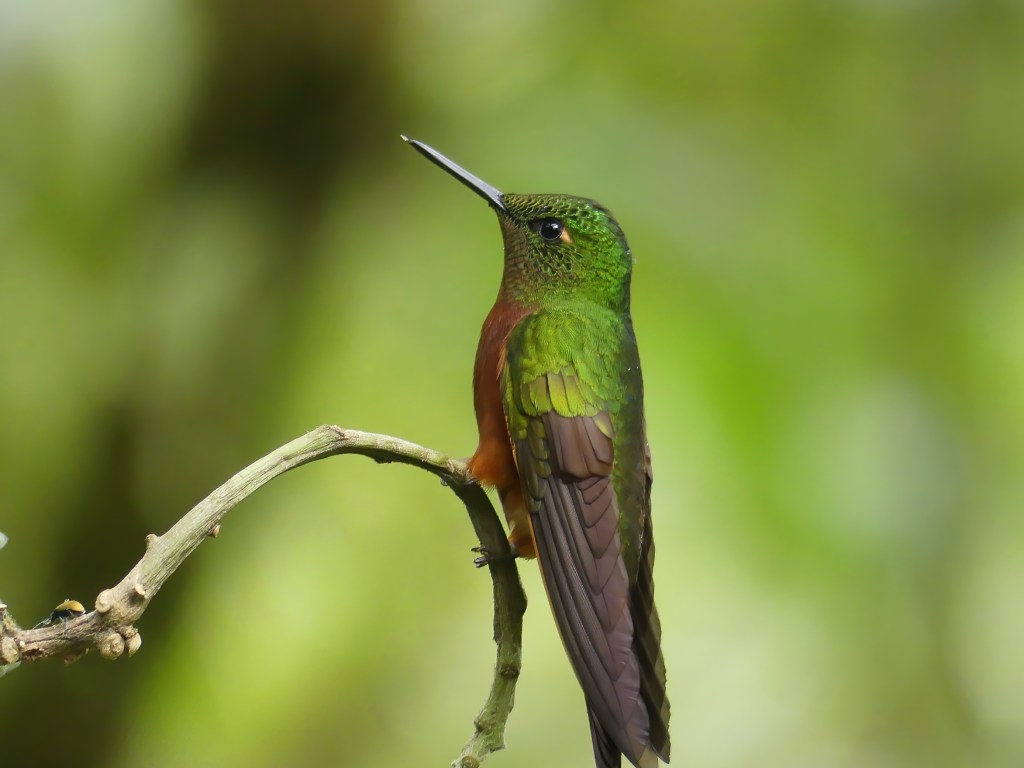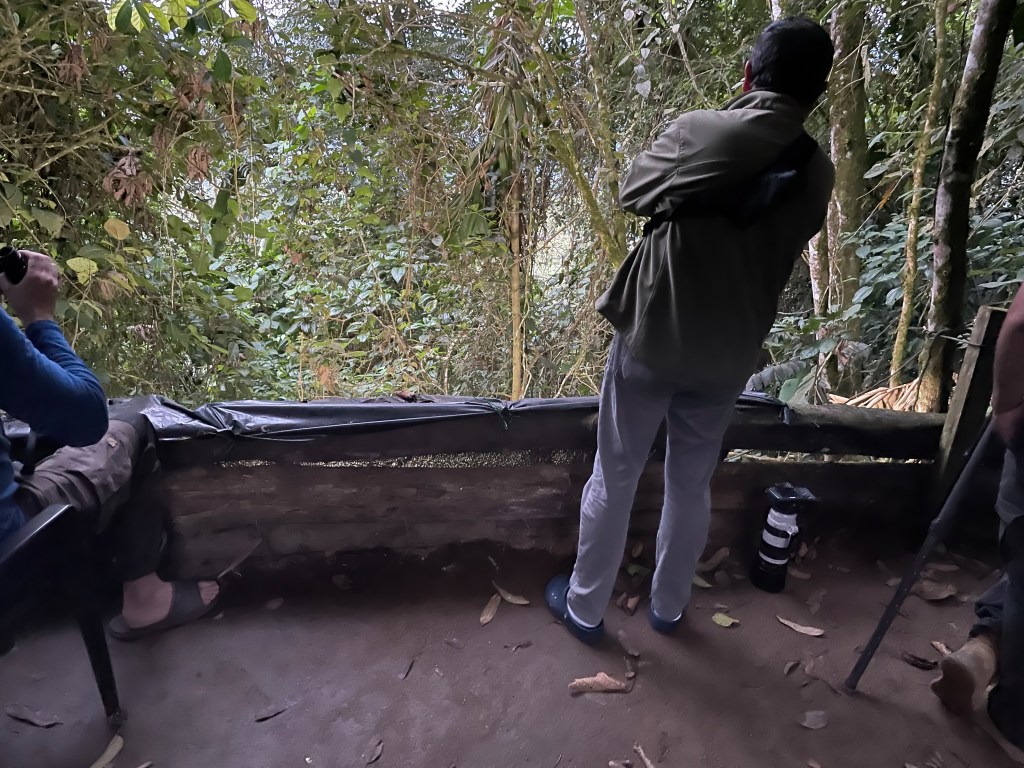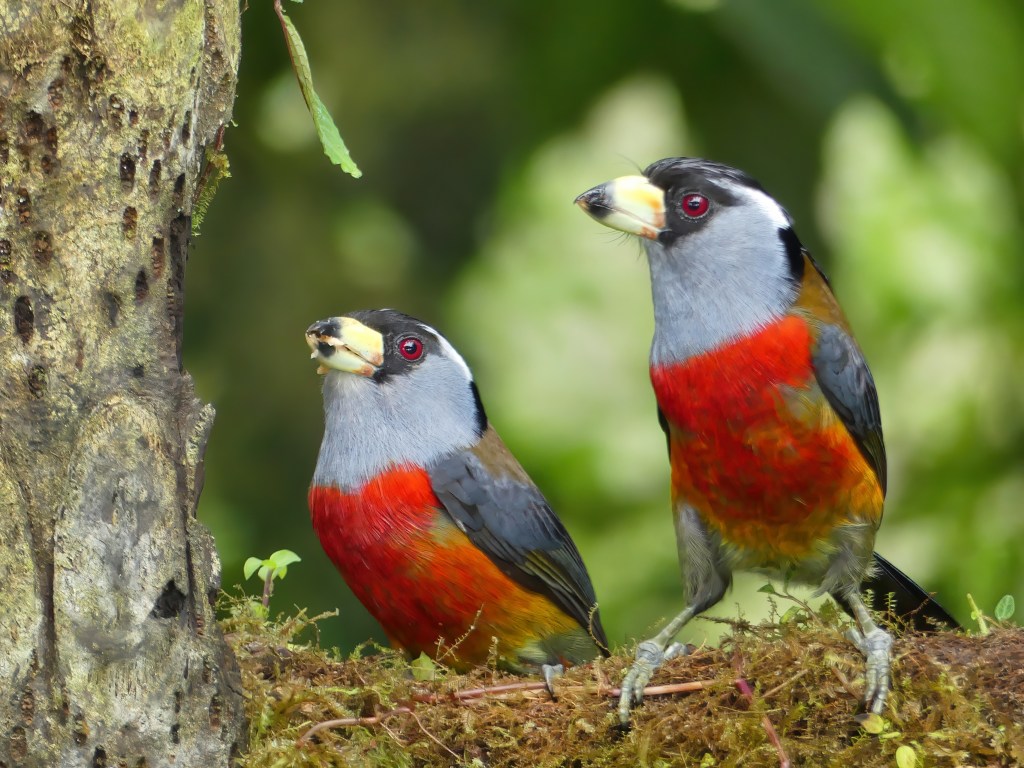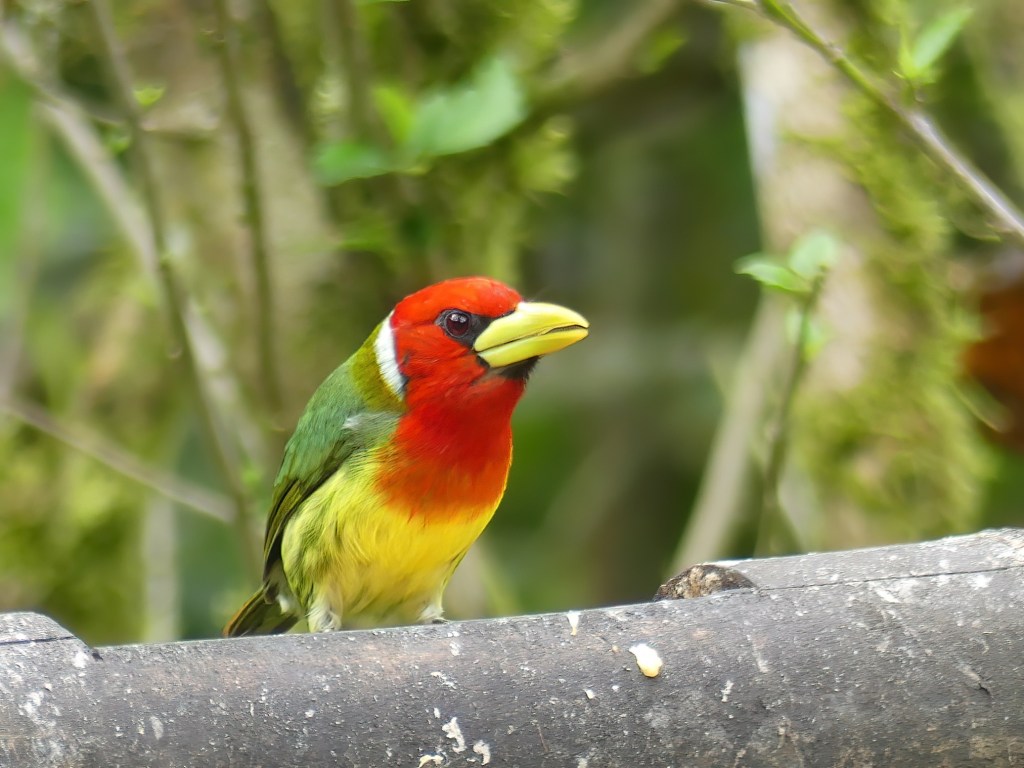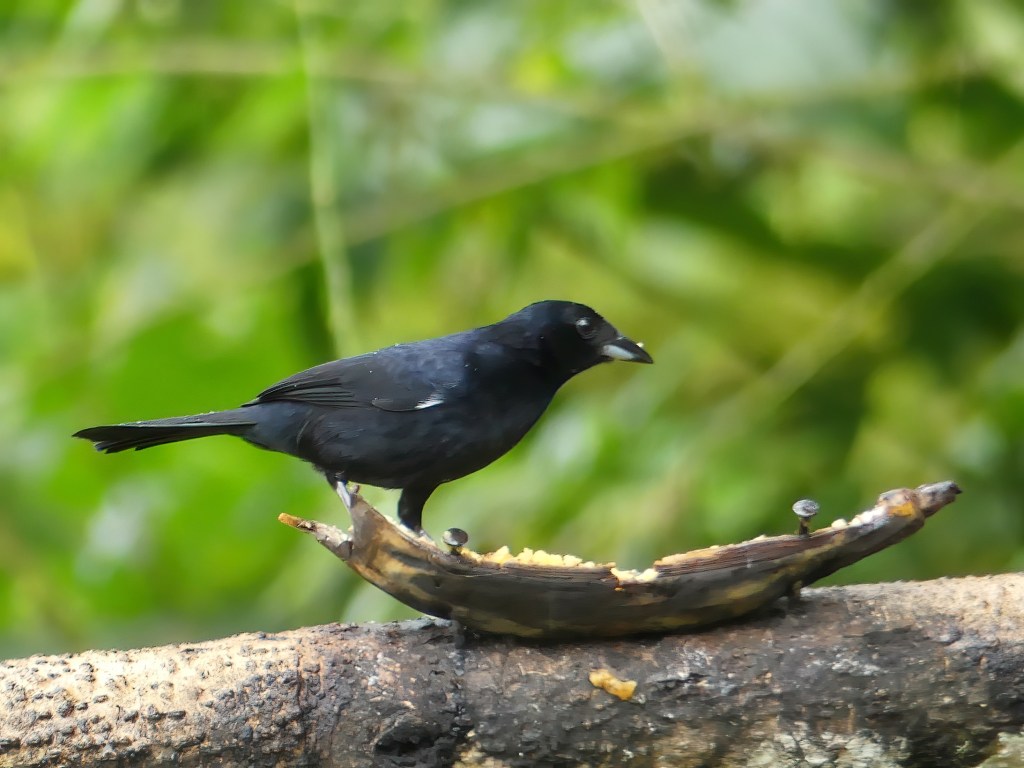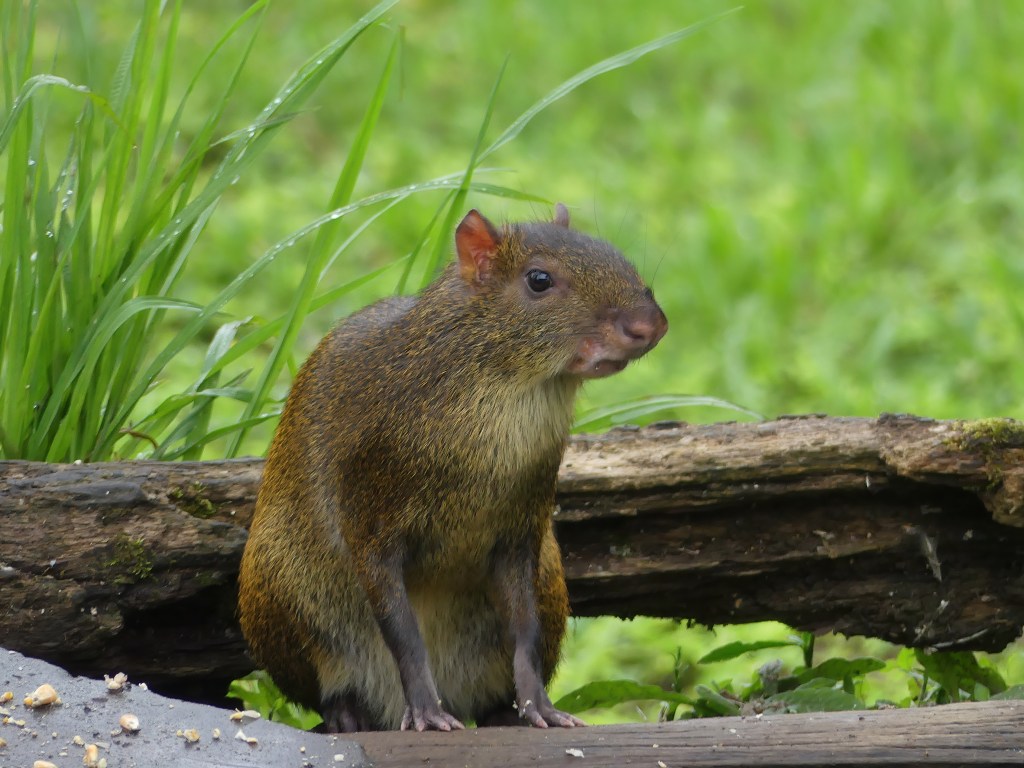The main road that leads from Quito to the east side of the Andes takes you over Papallacta Pass at about 13,500 feet. The view from the pass is spectacular with the snow-covered Antisana volcano in the distance. I was excited that I would be seeing a new part of this beautiful country and many new birds.

Our first stop was Guango Lodge, the only place that I had visited on this side of the Andes during my earlier trip in 2013. I didn’t get any life birds this time, but I did get my first photos of some these beautiful birds, including the Chestnut-breasted Coronet, Speckled Hummingbird, and Tourlamine Sunangel below.
We walked to the river, often one of the easiest places to see White-capped Dipper, but we had no luck with it. We did see a Torrent Duck, however, a beautiful male resting on a rock in the middle of the river.

We continued east to our destination for the next four days, WildSumaco Lodge, and arrived in time to enjoy the hummingbird feeders before a delicious dinner.
My favorite feature at WildSumaco is the moth sheet which attracts birds early in the morning. We started each of our four mornings here at 6:00 AM. It’s really just a sheet on the side of a steep little hill with lights positioned at the top. In the photos below you can see birders standing above the sheet watching the activity in the little clearing below. The black plastic is just protecting the lights. We only saw a few species here, but they were shy birds that we would not have seen at all without the moths to draw them in.
The most reliable bird at the moth blind was a male White-backed Fire-eye who showed up every day. He was so cooperative that Xavier began saying “Your friend is here” to me each morning. In spite of the overall ease of seeing the bird, I saw the white spot on his back only on the second morning.

When planning the trip, I had told Xavier that I wanted an “easy” trip, so we did road birding rather than hiking the steep, difficult trails. On our first day, on the road to the lodge, we saw this impressive Great Black Hawk.
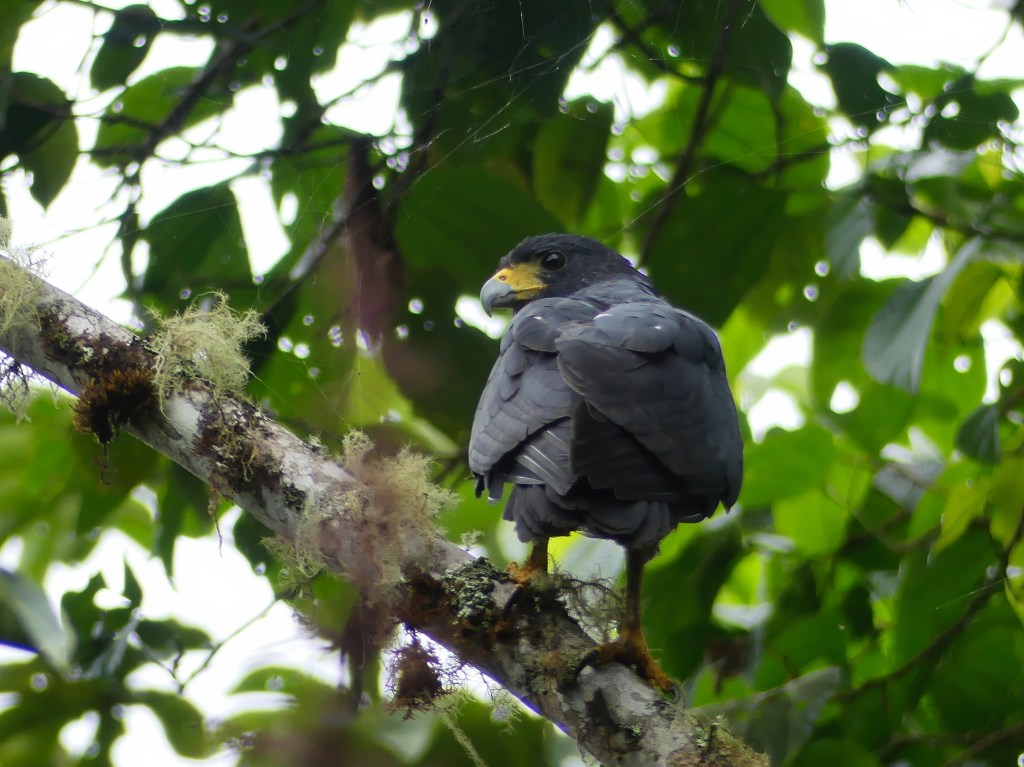
After lunch, we saw more special birds. Here is antpitta #5 for the trip, Plain-backed Antpitta. We also saw another Ochre-breasted Antpitta (the first one was at Angel Paz’s place on the second day of the trip). A White-crowned Tapaculo also came for worms, but it declined the photo op.

Later that afternoon back at the lodge, we watched more hummingbirds. New birds for the trip and my life list were Many-spotted Hummingbird, Napo Saphirewing, and Golden-tailed Sapphire.
We were at the moth blinds again early our second morning and this time I knew what to expect a bit better. Those shy birds were always going to be challenging to photograph in the low light, but I was thrilled to get the shot below of a White-chested Puffbird.

Another highlight that morning was good looks at a cute little Peruvian Warbling-Antbird.

The most difficult bird to photograph was the Black-billed Treehunter, but I was able to get a shot by leaning over the edge as he came up to nab a moth from the sheet.

After breakfast, we took boxed lunches and set off for Reserva Narupa, one of the 15 reserves established by Fundación de Conservación Jocotoco. My wonderful guide for this trip, Xavier Munoz, and I share a passion for conservation. Xavier was a founding member of the Jocotoco Foundation and he remains involved as a board member. An organization that I support, the American Bird Conservancy, is a partner of the foundation. Both organizations are dedicated to protecting birds and the critical habitat they need to survive, especially endangered and limited range species. So, for many reasons, I was excited to visit the Narupa reserve which protects over 4,000 acres of low montane forest.
Signs along the trail feature birds that depend upon the reserve. It is an important wintering site for Neotropical migrants such as Cerulean Warbler.

A year-round resident of the Narupa reserve and one of our main targets this day was Coppery-chested Jacamar. This bird exists only in a restricted elevational and geographic range mostly in Ecuador. It’s global conservation status is vulnerable. And, as you can see in the photo below, it’s a cool bird!

We also saw lots of hummingbirds; four were new birds for the trip and life birds for me, including the Green-backed Hillstar and Violet-fronted Brilliant below.
The next morning back at the lodge, I was happy to get photos of a couple more visitors to the moth sheet including this Plain Antvireo.

The Black-faced Antbird was much more cooperative that he had been on previous days. Here he is just before grabbing a moth.
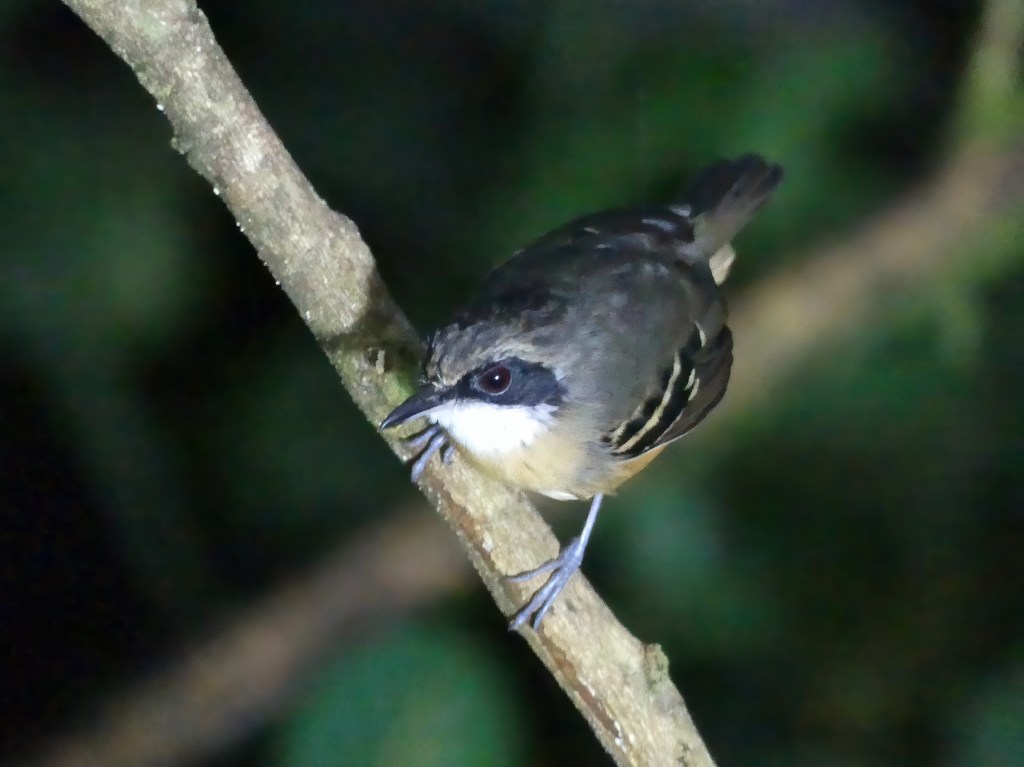
I missed the banana feeders that were everywhere in the area northwest of Quito. They attracted tanagers and other birds, but there were no fruit feeders in the Andes’ eastern foothills. The reason seemed to be that the birds here did not come to them enough to make it worth the trouble. Magpie and Silver-beaked Tanager were life birds for me in this part of the trip, but I didn’t get close enough for good photos of either species. However, Xavier kindly carried a scope on all our walks so I did have good views of most of the birds we saw while walking along the road.
To be honest, I was disappointed in the deck at WildSumaco Lodge. It was large and beautiful, but other than hummingbirds coming to the feeders, I think the only bird we saw from the deck was a Bananaquit. I loved the moth blind, though, and we saw some pretty amazing birds during our stay. The rooms were lovely with the best hot showers of the trip and the food was fantastic. I wouldn’t hesitate at all to return for another visit.
Our four days at WildSumaco went quickly; on the morning of April 27, we left for the short drive to Limoncocha.
